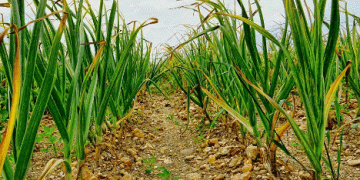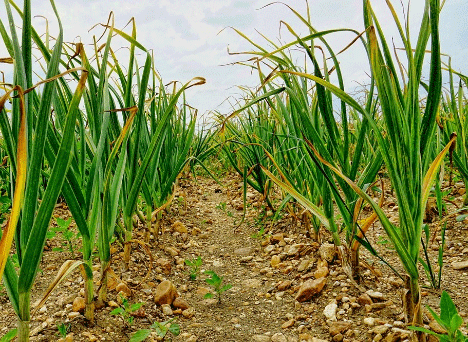In the first half of 2024, Peru’s garlic exports suffered a dramatic downturn, with export volumes plummeting by 65% and export values decreasing by 59%. The primary region affected was Arequipa, the largest garlic-producing area in Peru, which has been grappling with severe water scarcity and high temperatures. These adverse conditions have severely impacted the region’s ability to sustain garlic production.
Arequipa’s water woes stem from reduced availability in rivers and valleys, critical sources for irrigation in this arid region. The lack of sufficient water has not only diminished crop yields but also affected the quality of the garlic produced, leading to lower marketability and reduced export potential. This situation has been a significant setback for the Peruvian garlic industry, which had been on a path to recovery following the disruptions caused by the global pandemic.
Global Market Context and Implications
The international garlic market has seen a reduction in supply from several key producers, which has led to fluctuating prices and altered trade dynamics. Countries like China, which dominate the global garlic trade, have also experienced production challenges, including labor shortages and logistical bottlenecks, further complicating the global supply chain.
For Peru, which has been trying to carve out a niche in the global garlic market, these global challenges, combined with domestic climatic issues, have created a perfect storm. However, reduced shipments from other major garlic-exporting countries could potentially open up opportunities for Peruvian exporters if they can overcome the current production hurdles.
Optimism for the Second Half of 2024
Despite the bleak performance in the first half of the year, there is cautious optimism within the Peruvian garlic industry for the second half of 2024. Industry forecasts suggest a potential recovery, with expectations of a 10% increase in production volume and a 4% rise in export value. This optimism is based on improved water management strategies, the hope for more favorable weather conditions, and the possibility of stabilizing global market conditions.
Moreover, the global reduction in garlic supplies might create a window of opportunity for Peru to regain its market share if it can meet international demand. Peruvian exporters are also exploring alternative markets and diversifying their product offerings to mitigate risks and capitalize on any potential market gaps.
The first half of 2024 has been a challenging period for Peru’s garlic industry, with significant drops in export volumes and values due to climatic adversities. However, the industry remains hopeful for a recovery in the second half of the year, driven by improved production conditions and potential global market opportunities. For farmers, agronomists, and agricultural engineers, the key takeaway is the importance of adaptive strategies in the face of climatic unpredictability and the need to remain agile in a fluctuating global market.
As the year progresses, all eyes will be on how Peru navigates these challenges and whether the anticipated recovery will materialize, setting the stage for future growth in the Peruvian garlic sector.































